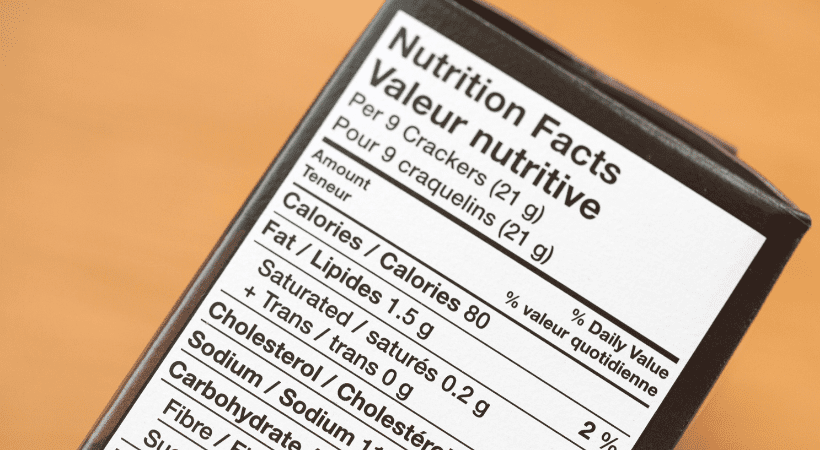Lifting the Lid on Bottle Cap Changes
Lifting the Lid on Bottle Cap Changes
In a world of 24/7 digital and social media, it’s easier than ever to gauge consumer reaction to a change in the food industry – all you have to do is search online to see people’s views and reviews. And one topic which has gained traction across Twitter, TikTok and other social platforms is the tethered bottle caps recently introduced to shop shelves.
Despite the new bottle lid caps becoming more commonplace, it’s not yet a legal requirement in the UK, and it remains to be seen if regulatory decision-makers will join their European counterparts in introducing these rules.

But what are the new bottle caps rules, what’s the aim behind them, and will all our bottle lids be tethered in the future? We’ve got the answers for you below.
Table of Contents:
Why are some bottle caps now tethered?
Attached lids for single-use plastic drink bottles (of up to 3-litre capacity) was first mooted five years ago through the EU’s Directive on single-use plastics. Article 6(1) requires: 1. Member States shall ensure that single-use plastic products listed in Part C of the Annex that have caps and lids made of plastic may be placed on the market only if the caps and lids remain attached to the containers during the products’ intended use stage.
On 30 May 2023, the Commission adopted implementing Decision 2023/1060 (Implementing decision – 2023/1060 – EN – EUR-Lex (europa.eu)on a harmonised standard for test methods and requirements to demonstrate that plastic caps and lids remain attached to beverage containers.
This will become mandatory in July 2024 across the EU. Because of Brexit, the UK isn’t required to sign up to the new rules and can make an independent decision on lid tethering.
If it’s not a UK requirement, why are we seeing them here?
There are several reasons why tethered lids have already reached UK shelves. The first is that, where a bottle manufacturer sells across European and UK markets, it makes sense for them to change their designs rather than having two different types of plastic bottle tops in production.
Secondly, there’s speculation in the industry that UK regulators will follow suit meaning some drinks manufacturers are simply rolling out the changes ahead of any new rules coming into place.
And finally, many manufacturers are supportive of the sustainability and recycling motivations behind this new initiative and as such, are excited to further this agenda in the UK market too.
What’s the aim of the new rules?
It’s hoped that by tethering the lid to the rest of the bottle, there will be fewer discarded caps (either by accident or deliberate littering) and more will make their way to recycling plants. Supporters of the changes also suggest the new designs are more practical and hygienic, while detractors think just the opposite.
How are people reacting?
There have been mixed reviews online – with some confusion being reported, such as individuals thinking their bottle was defective, others attempting to rip off the tethered lids with limited success and even some complaints of injury. There are also people in favour of the new designs, given the motivations behind it. Still, as with past changes (like the introduction of retained can ring pulls) this has been met with some consumer resistance.
What are manufacturers saying?
Jon Waters, Technical Packaging Team Leader at Innocent drinks, explains why they’re already looking to introduce tethered lids into the UK market:
“The move to attached caps is an important step in making recycling easier for everyone. The new design ensures that the cap stays connected to the bottle after opening,to reduce the likelihood of littering and to make it easier to recycle both parts together. Whilst the UK is exempt from the European legislation, Innocent will be introducing attached caps to our bottles in all markets later this year as part of our commitment to making it easier for our drinkers to recycle the entire packaging.”
I’m a manufacturer wanting to know more, who should I contact?
This regulation is just one of several environmental regulations impacting food and beverage businesses. Ashbury is always happy to discuss changes like the potential for tethered lids to become mandatory in the UK. As a leading-edge regulatory consultancy dedicated to making global food compliance easy, we work closely with major brands and retailers. Ashbury’s experts help clients launch new products and expand into new markets, confident that their products and labels are compliant. It’s not just about supporting busy teams; it’s about protecting brands and consumers through accurate and compliant product information.
While this new initiative has the potential to reduce littering and increase recycling, there are – of course – challenges to overcome. In addition to being tethered, lids must include an increased percentage of recycled content, be widely recyclable across local authorities, and meet storage, production, and use requirements.
And we’d encourage manufacturers not to keep a lid on this – communication is key here to share the environmental reasons why tethered lids may become standard across the globe to ensure the public understands the eco-friendly aim of this new directive.
Disclaimer: Ashbury does not manufacture these lids or govern their use. This blog is for educational purposes about the regulation behind these lids.
Next reads
The Peanut Diaries: School and Social Occasions
The Peanut Diaries: Navigating Social Events and Celebrations with Food Allergies
The Peanut Diaries: A Parent’s Journey to Uncovering their Child’s Allergy
Redefining Healthy: What the FDA’s New Rules Mean for Food Labels and Nutrition Claims
Keep up to date with our latest insights
Subscribe to our mailing list to stay in touch with the latest news, insights and updates from Ashbury





